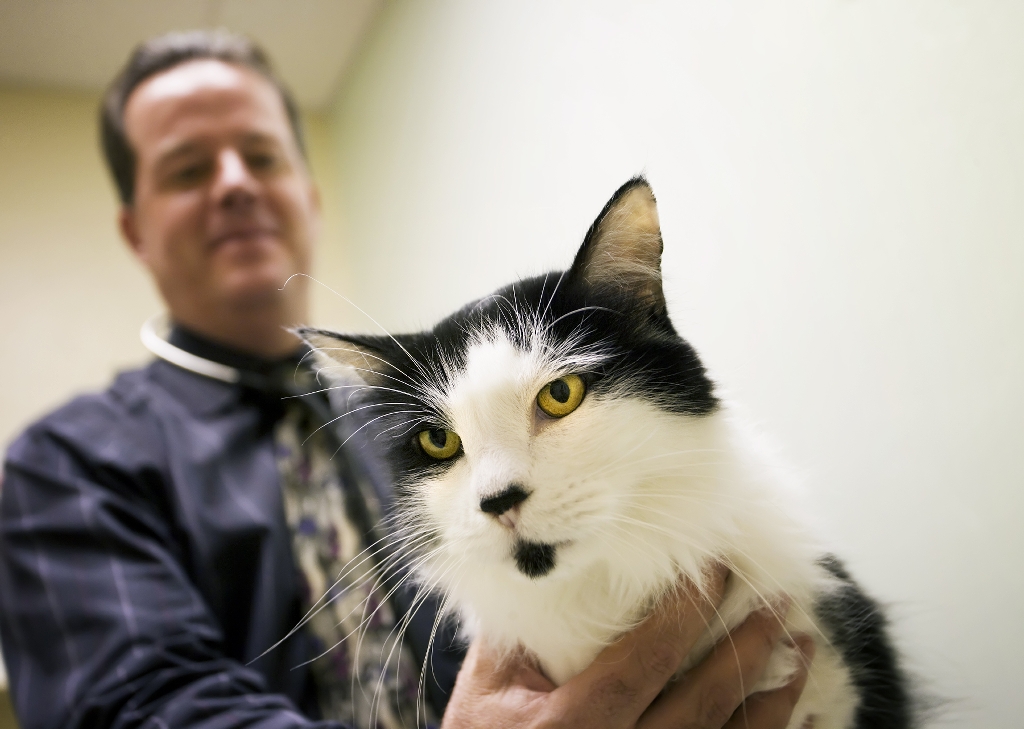In consulting with hundreds of companion animal veterinary practice owners over the years, I have seen that one of the most difficult things for them to do is get the ASSISTANCE they need to grow it beyond its initial plateau. They get into the practice ownership role usually because they feel they can deliver a professional service and do it well. They do everything themselves at first and the business grows.
At some point they realize that they are exhausted and that something needs to change. They want to grow the practice, but don’t know how that would be possible given everything they are already doing. They hire staff to help, but it does not change much, since they do not know how to leverage their time. But they inch forward and finally hire an associate veterinarian, sometimes only part-time since they do not have the liquidity. Interestingly, most times that part-time vet only skims off traditional clients, and reduces the practice owner’s personal income in their first year, but since the practice owner now has breathing space, the rationalize the trade-off.
In Australia, the syndrome is often to hire young veterinarians instead of skilled nursing staff, so quality of life can become easier for the practice owner, but the income is seldom incrementally increased to add liquidity. “Progressive practices” have 3 nurses per veterinarian, where as in the USA, we see 5 to 7 technicians per veterinarian, plus a quality client relations team.
What is a ‘quality client relations team’ definition in your practice? Is it measured in booked appointments per incoming telephone calls? What is that ratio for your team – one in ten calls become an appointment? In a practice where we put a phone receptionist behind the scenes, that number becomes 5 in 10 without really trying, and we have practices where it is 7 or 8 of every ten incoming calls, mainly because the phone receptionist is sharing quality and value, then concludes each call with a two ‘yes’ option request for booking an appointment.
Yet we have practices in Australia that have NO client relation team members, and tries to do it all with veterinary nurses, who never hired on to be phone receptionists, and then they wonder why it does not work for them.
Michael Gerber describes the stages that an entrepreneur must go through to be successful in his book, “The E Myth Revisited.” This should be required reading for every new practice owner, or every practice that has plateaued, or even anyone even thinking of starting or buying a veterinary practice. If you haven’t read it yet, you should. In fact, The E Myth Veterinarian, by Gerber and Peter Weinstein, DVM, MBA, circa 2015, is an edition tailored to our profession. If you have read the original, but not the recent Gerber-Weinstein edition, and are still plateaued, read the new edition for the first time.
In order to grow a veterinary practice, at some point the owner must get help. He or she cannot continue to do it all and still have a life outside the business. This means that even though they believe that they are the best at doing the job and no one else can possibly do it as well, they have to cross that chasm and trust someone else to share the knowledge on how to effectively manage the operational workload. What we see all too often is a practice owner throwing his wife under the bus and expecting her to become a skilled manager, and if his wife refuses to be thrown into harms way, they select a skilled nurse and throw her under the bus as the new practice manager, without adequate training and/or skill and knowledge development (since the owner has neither also).
REALITY CHECK
I wrote the text, The Practice Success Prescription: Team-based Veterinary Healthcare Delivery, published by VIN Press in 2008; it has 18 appendices, as well as being 500 pages. We put it in the VIN Library for FREE DOWNLOAD. Then I find people trying to ‘cherry pick’ ideas, short-cut the training cycles, or take things out of context, and complain that it does not work as described. In fact, these approaches actually need a savvy consultant (i.e., DrTomCat@aol.com), to guide them and their team through the entire process, since it is obvious they do not have the attention span to do it all themselves.
Often we see neophyte practice owners who just keep doing it themselves because it is easier and takes less time than training someone else what needs to be done and how to do it. Many practice owners that I have met have actually tried to delegate at some point and it was a complete failure (they only could delegate process guidelines, rather than outcome expectations, since they never defined tasks in terms of effective measurements of outcomes, nor did they ever train their staff to trust their own good judgment). Then they become even more reluctant than ever to try it again. But if they are ever to have a successful and growing veterinary practice, one that can sustain itself and them, they have to get over that fear . . . this is where a savvy consultant becomes an option to help that floundering practice owner and team into a new format of operational awareness and organizational excellence.
This is not to say they are not correct in their fear and assumptions. At first, it will actually take more time and effort to train a new staff member, and sometimes longer to retrain existing staff members, to meet the new team-based healthcare delivery standards, but at some point, if the practice leadership wants to continue forward, the ownership will have to bite the bullet, accept the basic fact that their leadership vision is not management excellence, that team-based veterinary healthcare delivery is essential for practice growth, and detailed, step-by-baby-step skill and knowledge development is required, and that will take time.
In small business settings, most decisions that result in meaningful change have a “J-Curve”; the path from where you are to your goal often involves a downward slope before moving upward again toward the goal. According to “Successful Delegation” from www.MindTools.com, “Quite simply, people don’t delegate because it takes a lot of up-front effort.”
This brings us to what the veterinary practice owner must do to ensure that they are hiring an appropriate staff member with the proper attitude (see the text, Building The Successful Veterinary Practice: Innovation & Creativity (Volume 3), Blackwell/Wiley & Sons), and then the practice needs to have a self-directed, strategically sequenced, orientation & training program (e.g., Signature Series monograph, Orientation & Training Program, available from VIN Bookstore, www.vin.com). Many neophyte practice owners expect a new employee to be ready to be helpful in too short a time. This is where very well-defined Orientation & Training Program is supported by reasonable timelines, including written policies, procedures, standards and systems which will come into play during the development process.
Before bringing someone on board, the owner must take the time to think about what tasks lend themselves to delegating and what he must still do. One of the key functions of a practice owner is to provide the vision and direction of the practice. He or she must be responsible for getting the “right people on the bus,” to paraphrase Jim Collins’ book “Good to Great.” But there are many tasks that the practice owner can and should delegate in order to free up his time to work on the business of team-based quality healthcare delivery and stop being a technician, nurse or manager, and to have a balanced personal life.
OVERVIEW FOR PRACTICE LEADERS in TEAM-BASED PRACTICE CULTURES
LEADERS must share the WHAT and WHY in clear, concise, outcome-based terms.
ZONE TEAMS must develop the WHO and HOW for each new program
NOTHING IS INITIATED until the leaders, managers and staff members come to a jointly determined consensus for the WHEN, which includes milestones, completion dates, and measurements of success.
NOTE: when any new program is initiated, outcome parameters will not be unilaterally altered by staff, manager(s), leaders or veterinarians.
CLIENT THOUGHTS
One of the original Pfizer studies of 37,000 clients, done three years in a row, repeatedly show clients wanted to be seen on time, and be in-and-out of the consult room within 20 minutes. Other ‘Client Surveys’ have been done recently in the United States, and on a smaller scale in parts of Australia. Here are some top client comments about their veterinary practice and recent experiences:
- Make it easy for me to understand what is needed
- I am confused by “doctor talk”
- Please involve me in the decisions about my pet
- Fix my concern the FIRST time you see my pet
- Help me help my pet
- My veterinarian does not talk to me enough about what is needed
- I’d come back more often if it was less stressful
- My pet needed more examination than what I perceived happening
- I need better value for my spending dollar
- I want to prevent problems for my pet
- I really want to help my pet to live longer
- My veterinarian never made me aware that it was NEEDED NOW
- My vet was too rush, and his staff never really helped me understand why
These client comments reflect a need for behavior changes in veterinary healthcare delivery. In the book “Breakthrough Thinking,” the authors describe 6 ways to improve the quality of leadership thinking.
- Constantly challenge your assumptions
As hard to believe as they may be, here are a few quotes from some really smart people:
- “Building heavier-than-air machines is impossible” (Lord Kelvin, president of the Royal Society in 1895)
- “Everything that can be invented, has been invented” (the director of the US patent office in1899)
- “Sensible and responsible women do not want to vote” (Grover Cleveland, the 22nd and 24th President of the United States in 1905)
- “There is no likelihood that man can ever tap into the power of the atom” (Robert Millikan, physicist and 1923 Nobel laureate in physics)
Sadly, similar thoughts can be heard in our clinics: “We’ve always done it that way,” “I’ve never had a problem doing that” or “We don’t do this here.”
If you know anything about veterinary practice owners, or veterinary surgeons, you know that some have very few pet peeves. OK, maybe more than a few. Here is one is the all-too-classic “I’ve done this for 17 years and I’ve never had a problem.” In fact, based on my thorough experience in 2000+ practices around the world, this brief statement is false approximately 100% of the time, as a little bit of digging and probing quickly revealed in most every practice setting. Inevitably, this reminds me of quotes similar to “My grandpa smoked 20 packs of cigarettes a day, and he never had a health issue” or “My neighbor never wears his seatbelt and he’s never been in a car accident.”
- Avoid thinking ruts
By leaving blinders at the door, by avoiding thinking ruts, by defying ‘conventional wisdom’, big minds are able to challenge the status quo. “Conventional wisdom is merely the consensus of opinion until someone replaces it with something better” write the authors. How true, especially in the veterinary medical world. They also recommend avoiding “group think.”
- Improve your thinking skills
Edward de Bono is a physician and the founder of the “Center for the Study of Thinking” at Cambridge University. He is a thinking consultant. Who knew this profession even existed?
Dr. de Bono believes the ability to think well can be learned, whatever your IQ might be. Interestingly, he compares thinking to driving a car. You can have a powerful car but drive it badly. Or you can have a smaller car and drive it very well. Or you can have a beaten-up car and drive it poorly. And of course, you can have a powerful car and drive it well.
Your mind is similar to the car’s horsepower. How you use it is up to you. De Bono developed a technique called “lateral thinking” in order to explore new possibilities. Other authors call it “possibility thinking.” One way to achieve this state of mind is that when you are facing a problem, you should force yourself to list 5 creative solutions, no matter how crazy or outside the norm they initially sound.
Apply this idea, alone or as a group, to current threats to your clinic – local competitors/colleagues, online pharmacies, community demographics, etc. – and see what solutions we can come up with.
- Develop side interests and hobbies
Have you ever had a brilliant idea in the shower, or while brushing your teeth, or while hiking, or as you first get up in the morning?
The same thing could very well happen as you are enjoying a hobby or sports. When your mind is light-years away from your work-related issues, you may very well allow your mind to come up with new ideas.
I volunteer at the local Men’s Shed as a grant writer, and committee advisor in governance. I have coffee with them every Tuesday and Thursday mornings, and have developed a great rapport with a Scotsman who has a Health & Safety concern for Shed operations. Evenings, I now volunteer with Queensland Scouts, now that my knees are working again (“to keep myself physically strong . . .”).
- Seek constant feedback.
You can fear or ignore online ratings, “paper” survey or performance planning reviews, or you can benefit from them. This (free or low cost) type of feedback, whether it is positive or negative, can help you adjust and improve and grow.
If 10 clients tell you a specific staff member is rude, or “cold”, maybe there is some truth behind the comments that need action.
If performance planning reviews and client comments repeatedly convey the idea that the fancy scientific words you use are incomprehensible, don’t be defensive. Maybe it is an opportunity to improve your communication skills. Why talk about cardiomyopathy? Why use words like anemia, uroliths and/or hematomesis? Why use the expression cranial tibial thrust, ACL, C5 or F3?
So encourage feedback, and then don’t ignore it, act on it.
- Don’t think of yourself as an expert.
Of course, veterinarians are experts in the field of veterinary medicine. Some may even have a strong interest or specialization in a particular field. And most veterinarians continually strive to get even more knowledgeable by reading journals and attending CE meetings.
But sometimes, most of us need a tiny bit of humility and acknowledge the simple fact that we are not quite experts in human resources, practice management, accounting, architectural design, legal issues, internal communications, software strategies, information technology, social media, marketing tactics and external communication. Many times, our new Gen-Y staff members excel in many of these areas, and if not, there are SAVVY VETERINARY CONSULTANTS ready to support you on a reasonable fee-for-service basis. Team up with other experts, and learn from them.
Having a great mind is a wonderful thing. You can have an even greater mind by accepting input from others, whether they are clients, staff members, managers or outside experts.
I was recently listening to an interview. The consultant (outside the veterinary field) explained that his clients must accept to take one week off every quarter. Most, of course, think he’s crazy. It can’t be done. It’s against the norm. It’s heresy.
Interestingly, those who accept the challenge unanimously report that they end up with much better, grander, bolder ideas. Sometimes multi-million dollar ideas. They finally can slow down, enjoy life and think. They think like they rarely have. And invariably, their stress levels plummets while the business income sky rockets. I wonder how we can adapt this wonderful idea to our lives…
THE PRACTICE LEADER CHALLENGE
JUST DO IT! PREBOOKING DOES WORK!






